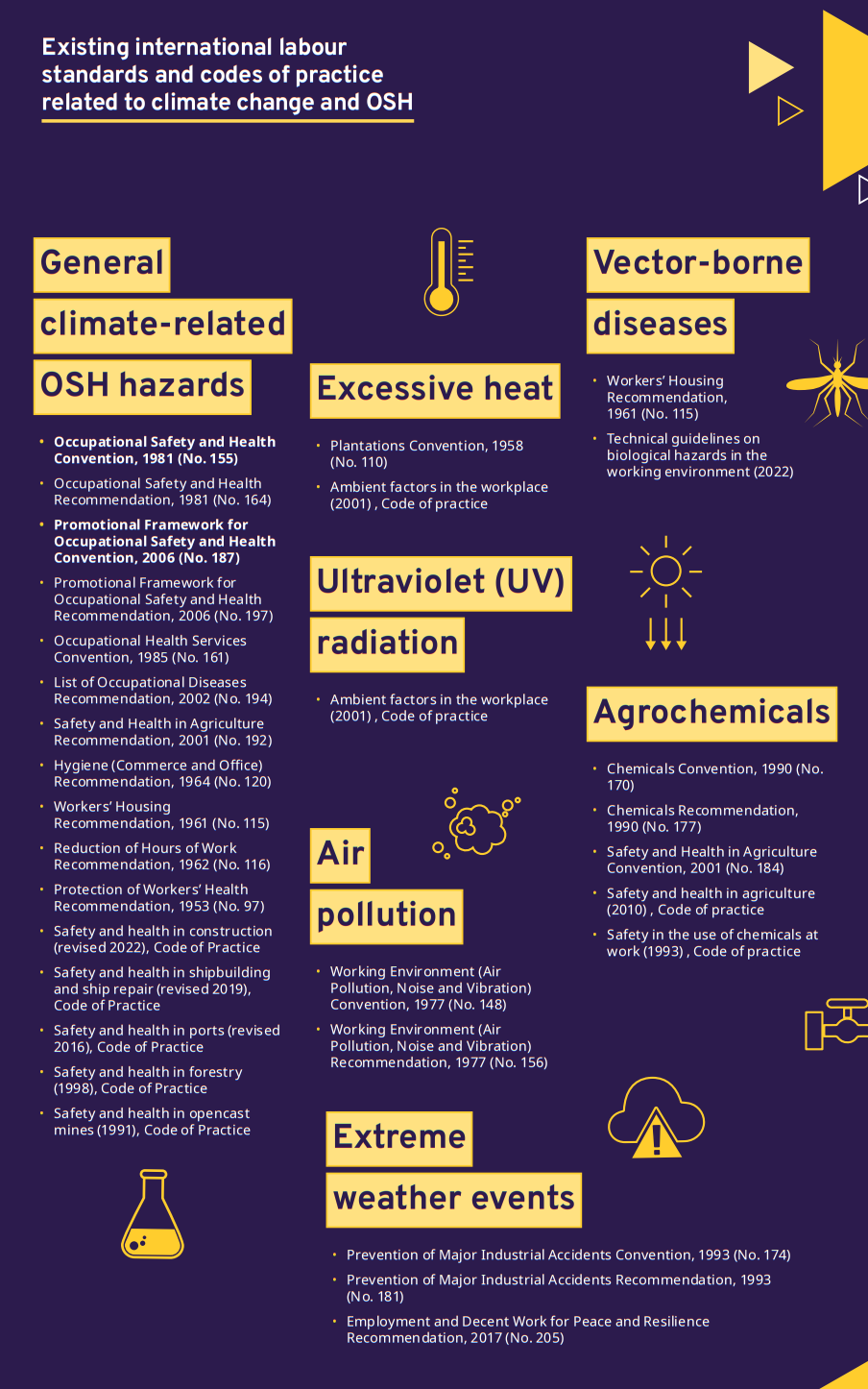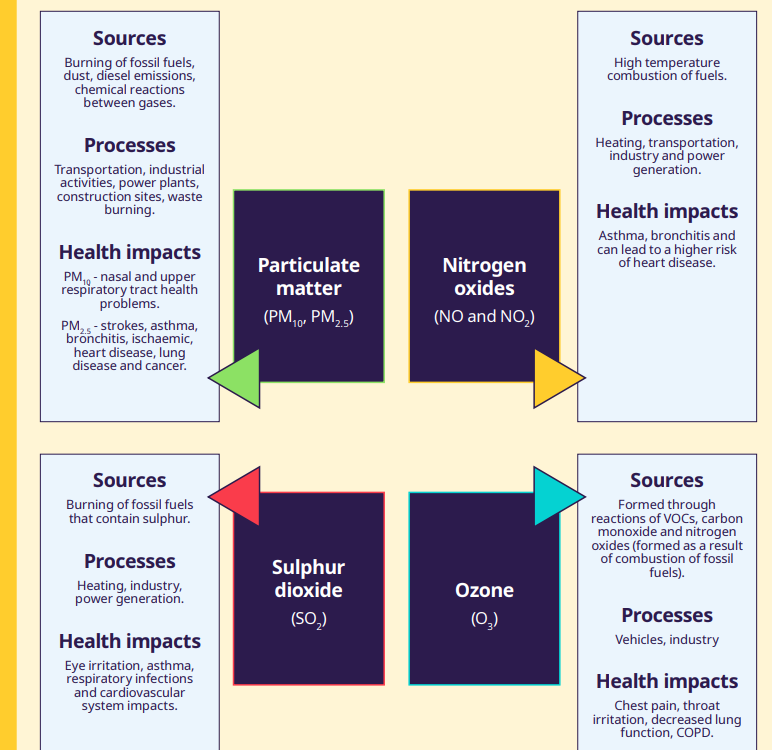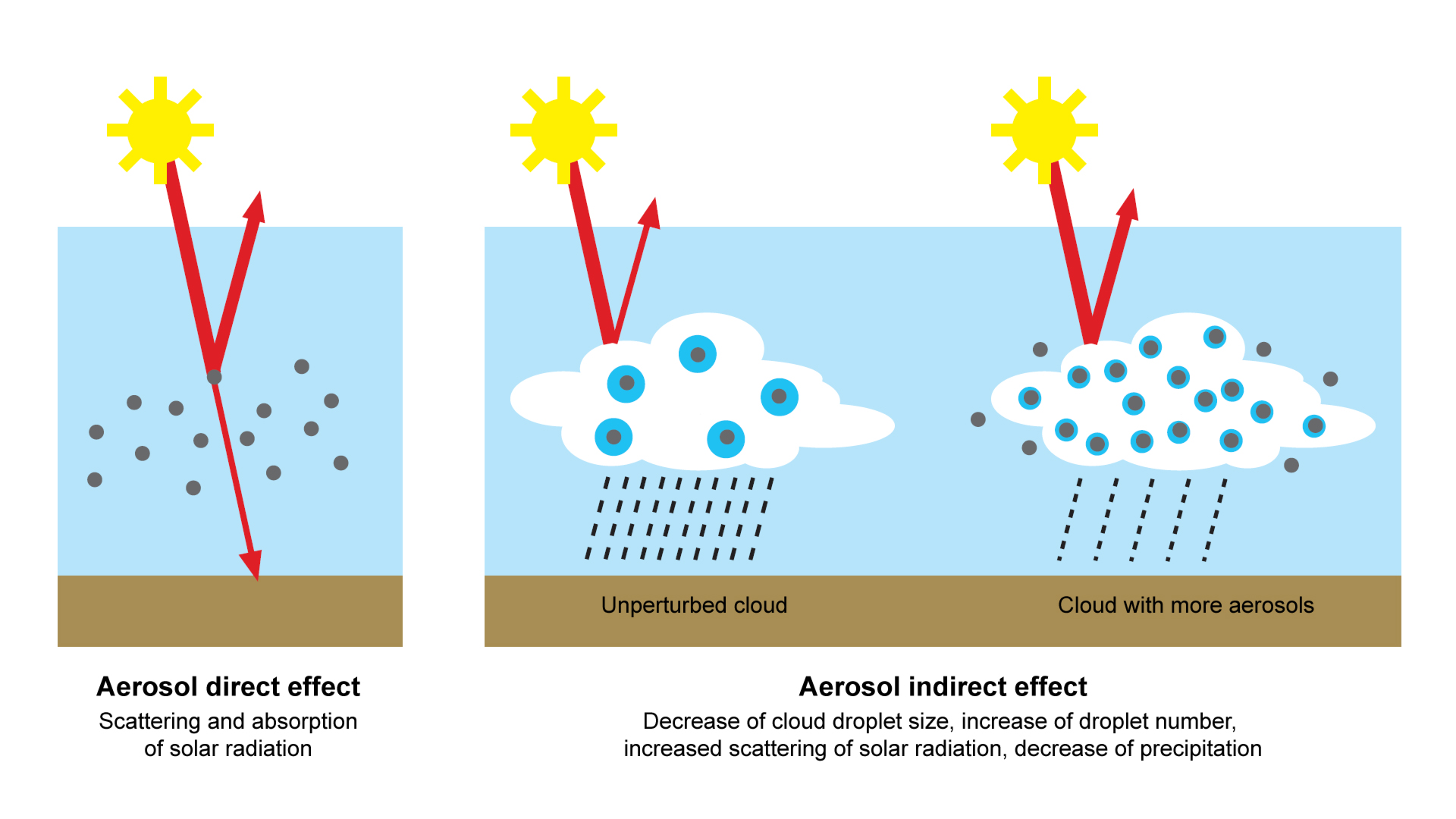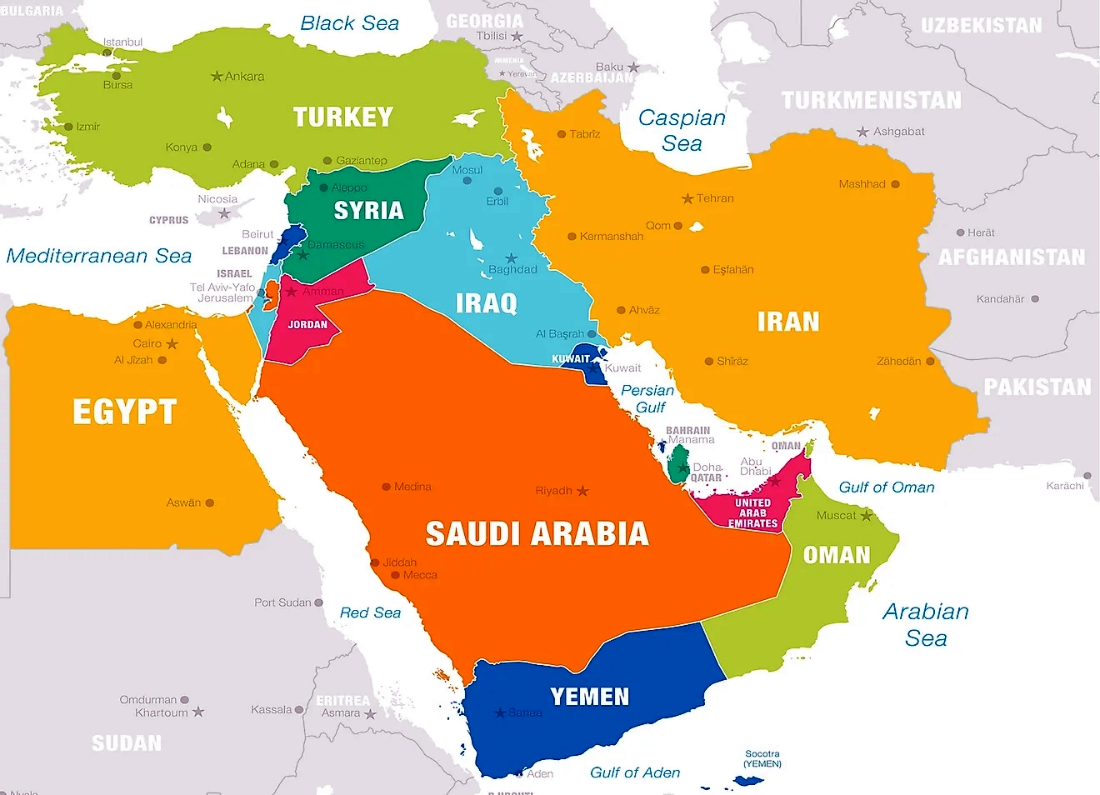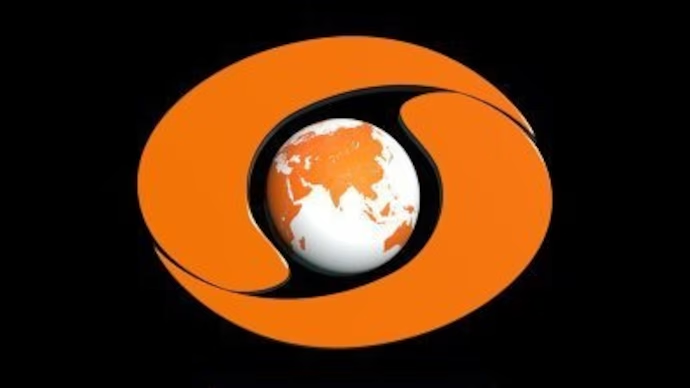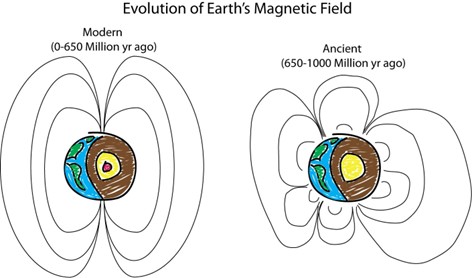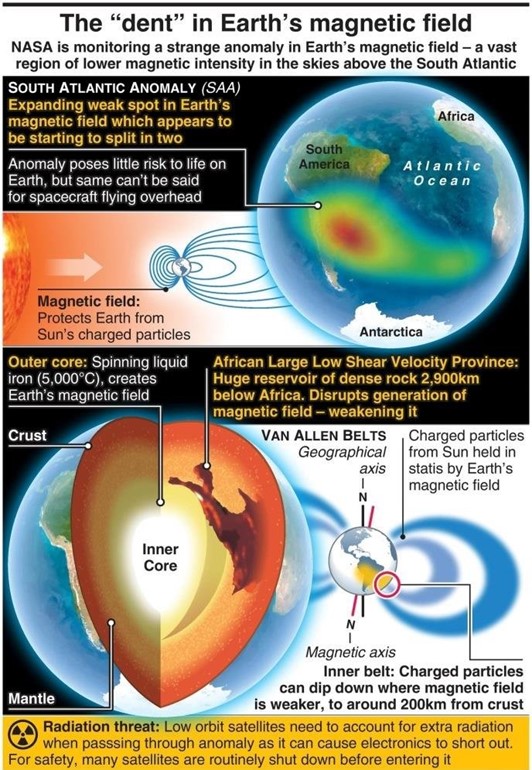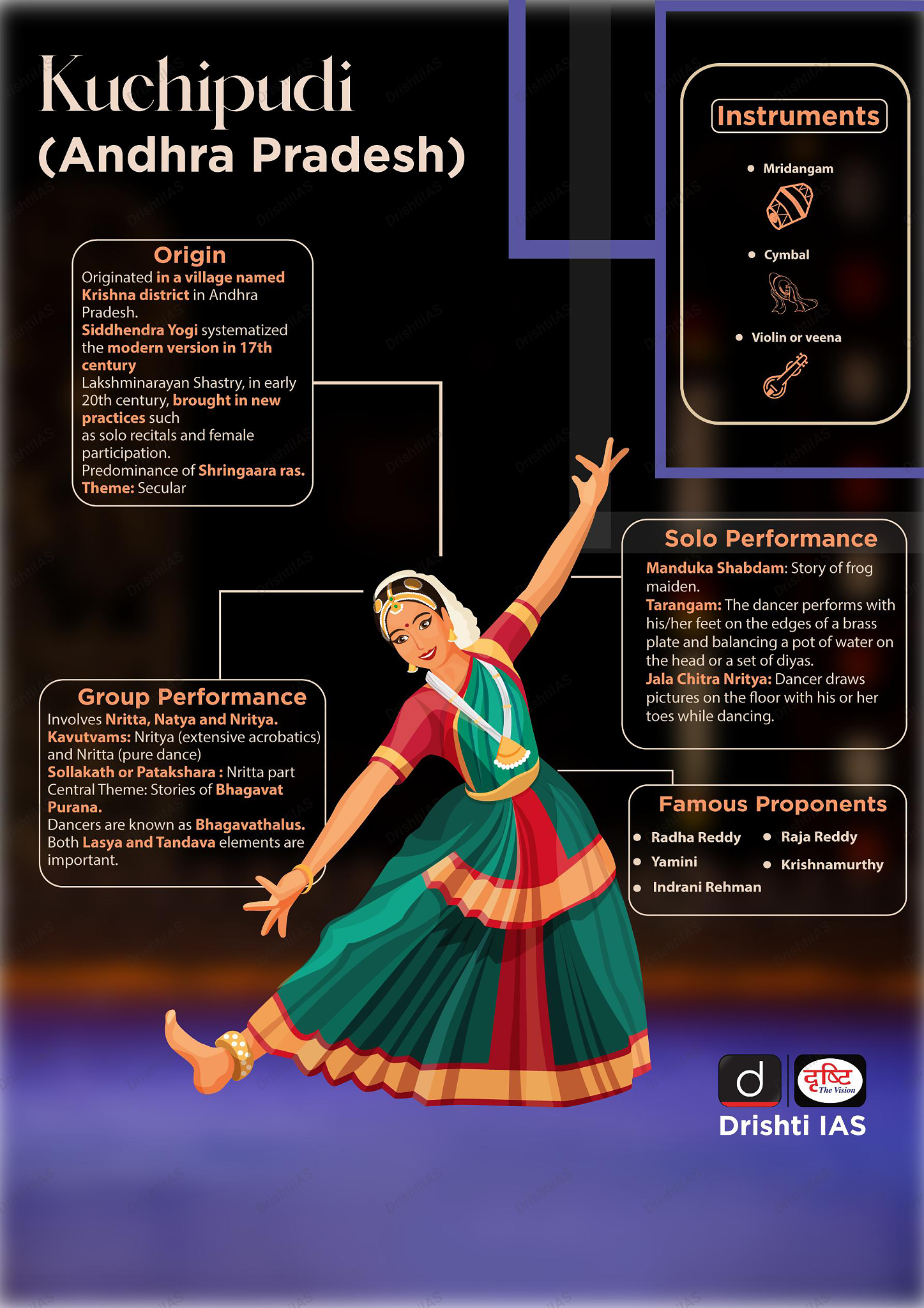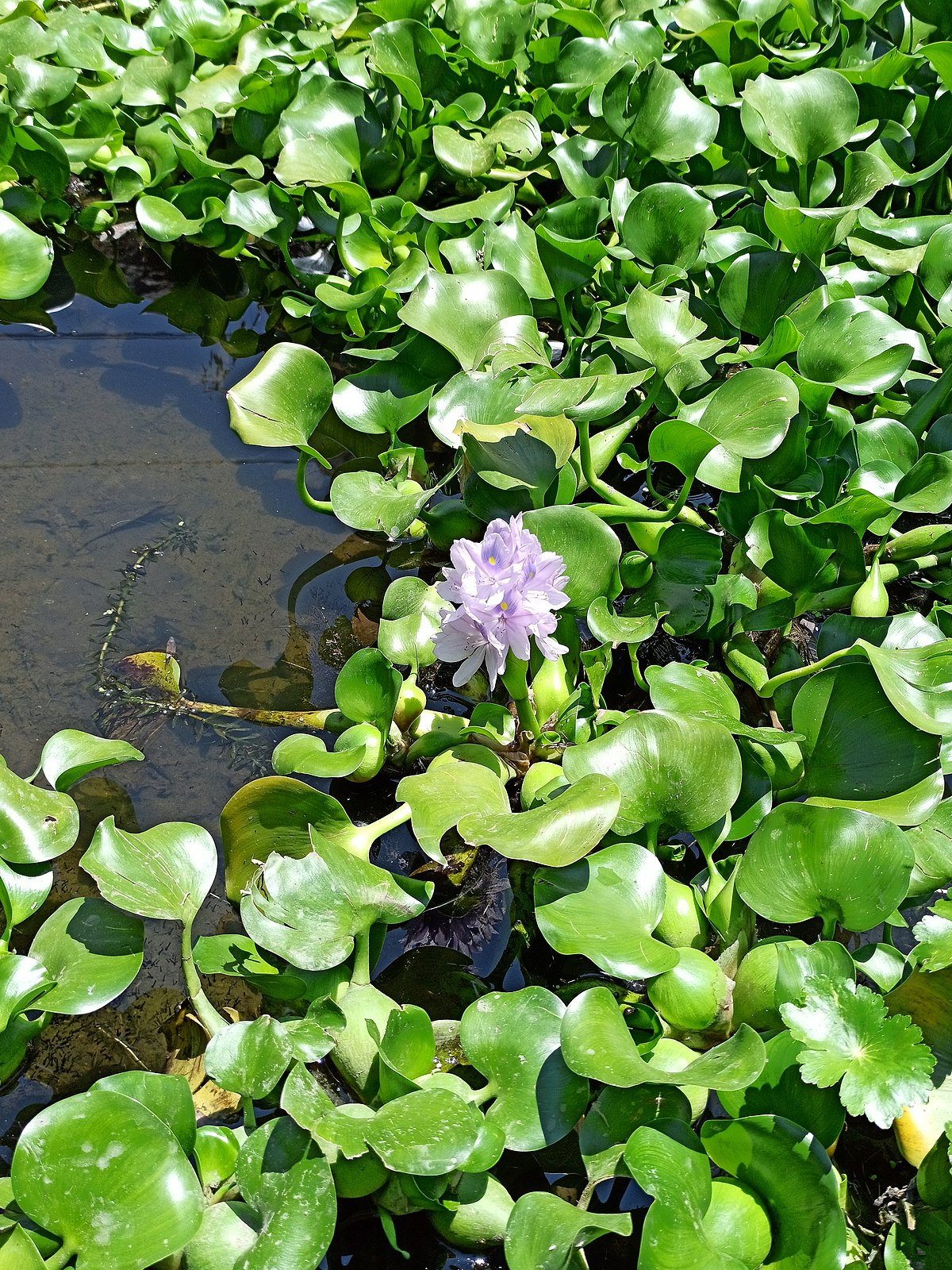Impact of Climate Change on Occupational Safety and Health
For Prelims: International Labour Organization, Occupational safety and health, Extreme weather events, Constitutional Provisions Related to Labour Safety, Occupational Safety, Health, and Working Conditions Code of 2020.
For Mains: Impacts of Climate Change on Occupational Safety and Health.
Why in News?
A recent report by the International Labour Organization (ILO) stated that climate change is significantly affecting occupational safety and health (OSH) worldwide, with workers facing increasing hazards but often having to work in dangerous conditions.
What are the Impacts of Climate Change on Occupational Safety and Health?
| Occupational Hazard | Industries Affected | Health Risks | Impact |
| Excessive Heat Exposure | Agriculture, environmental services, construction, etc. | Heat stress, heatstroke, rhabdomyolysis (muscles break down), cardiovascular diseases, etc. | 2.41 billion workers exposed annually, 22.85 million injuries, 18,970 work-related deaths |
| UV Radiation Exposure | Outdoor work like construction, agriculture, lifeguards, etc. | Sunburn, skin cancers, weakened immune systems, etc. | 1.6 billion workers exposed annually, over 18,960 deaths from non-melanoma skin cancer alone |
| Extreme Weather Events | Emergency workers, construction, agriculture, etc. | Varied risks due to extreme weather events | Many parts of India, Bangladesh, Thailand and Laos saw record-high temperatures in April,2023. |
| Workplace Air Pollution | Outdoor workers, transport workers, firefighters, etc. | Lung cancer, respiratory diseases, cardiovascular diseases | 1.6 billion outdoor workers face increased exposure, 860,000 work-related deaths annually due to air pollution |
|
Vector-Borne Diseases |
Outdoor workers such as farmers, landscapers, construction workers, etc. | Malaria, Lyme disease, dengue, among others | Limited data, over 15,170 work-related deaths each year due to parasitic and vector-borne diseases |
|
Agrochemical Exposure |
Agriculture, chemical industries, forestry, etc. | Poisoning, cancer, neurotoxicity, reproductive disorders, etc. | Significant risk for the 873 million workers in agriculture, over 300,000 deaths annually due to pesticide poisoning |
What are the Provisions Related to Labour Safety in India?
- Constitutional Provisions:
- Concurrent List: Labour is a subject in the Concurrent List where both the Central & State Governments are competent to enact legislation subject to certain matters being reserved for the Centre.
- Entry No. 55 in this list mentions “Regulation of labour and safety in mines and oil fields”.
- Directive Principles of State Policy:
- Article 39(e) of the Constitution emphasises the protection of workers' health, irrespective of gender, and ensures that children are not exploited due to their young age.
- It also aims to prevent individuals from being compelled by economic circumstances to engage in occupations that are not suitable for their physical abilities.
- Article 42 mandates that the State shall make provisions for securing just
- and humane conditions of work and for maternity relief.
- Article 43 outlines the State's responsibility to ensure that all workers, whether in agriculture, industry, or other sectors, receive a wage that allows for a decent standard of living.
- This includes conditions of work that enable a satisfactory quality of life, adequate leisure time, and access to social and cultural opportunities.
- Additionally, the State should work towards promoting cottage industries either individually or cooperatively in rural areas.
- Article 39(e) of the Constitution emphasises the protection of workers' health, irrespective of gender, and ensures that children are not exploited due to their young age.
- Legislative Provisions: The Occupational Safety, Health, and Working Conditions Code of 2020 delineates responsibilities for employers and employees, sets safety standards across sectors, addresses worker health, working hours, and leave policies.
- The Labour Bureau under the Ministry of Labour and Employment in India compiles statistics on industrial accidents and oversees occupational safety.
- International Commitments: India has ratified 47 International Labour Organization conventions along with 1 protocol. Currently, 39 conventions are in force.
- The major conventions related to worker’s health include, the Medical Examination of Young Persons (Sea) Convention, 1921, Equality of Treatment (Accident Compensation) Convention, 1925, Protection Against Accidents (Dockers) Convention (Revised), 1932.
- Concurrent List: Labour is a subject in the Concurrent List where both the Central & State Governments are competent to enact legislation subject to certain matters being reserved for the Centre.
What are the Temperature Limits Related to Workplace in Different Countries?
| Country | Temperature Limits |
| India | Wet Bulb Globe Temperature (WBGT) should not exceed 30°C in factory workrooms |
| China | Work stoppage above 40°C outdoor temperature |
| Singapore | The temperature in working chambers should not exceed 29°C |
| Brazil | Work stoppage above WBGT of 29.4°C for low intensity |
Note:
- The Indian National Disaster Management Authority, along with the Ministry of Home Affairs, issued guidelines for managing heatwaves to safeguard workers.
- These guidelines stress educating workers, ensuring hydration, regulating schedules, and providing medical facilities.
- Special consideration is advised for pregnant workers and those with health issues. Dressing in light, breathable clothing and using umbrellas or hats is recommended.
Way Forward
- Training and Awareness: Providing comprehensive training and awareness programs on climate-related hazards and safety measures can empower workers to identify risks and respond effectively.
- Green Jobs and Sustainable Practices: Promoting green jobs and sustainable practices not only contributes to mitigating climate change but also fosters healthier and safer working environments, such as reducing exposure to harmful substances or emissions.
- Climate-Resilient Policies: Developing and implementing climate-resilient policies and regulations that prioritise worker safety and health in the context of climate change can provide a structured framework for organisations to follow.
- Heat Stress Management: Implementing heat stress management programs, including regular breaks, hydration stations, and access to shaded areas, can protect workers from heat-related illnesses in hotter climates.
- Highly Hazardous Pesticide(HHP) Control: Implementing strict regulations and standards for the production, sale, and use of HHPs. This includes thorough risk assessments before approval, periodic reviews, and bans or phase-outs of particularly hazardous substances.
|
Drishti Mains Question: Examine India's current occupational safety and health framework, highlighting key challenges and suggesting innovative solutions. |
UPSC Civil Services Examination, Previous Year Question (PYQ)
Prelims
Q. Consider the following statements: (2017)
- The Factories Act, 1881 was passed with a view to fix the wages of industrial workers and to allow the workers to form trade unions.
- N.M. Lokhande was a pioneer in organizing the labour movement in British India.
Which of the above statements is/are correct?
(a) 1 only
(b) 2 only
(c) Both 1 and 2
(d) Neither 1 nor 2
Ans: (b)
Mains:
Q. “Success of ‘Make in India’ programme depends on the success of ‘Skill India’ programme and radical labour reforms.” Discuss with logical arguments. (2015)
Solar Radiation Decline in India
For Prelims: Climate Change, India Meteorological Department (IMD), Aerosol, Renewable Energy, PM-KUSUM, Rooftop Solar Programme.
For Mains: Solar Energy and Development in India, Challenges Related to Solar Energy, Government Schemes to Enhance Solar Energy Production in India
Why in News?
As concerns about climate change continue to escalate, the importance of renewable energy sources like solar power becomes increasingly evident.
- However, a recent study by scientists at the India Meteorological Department (IMD) has revealed a concerning trend about the quantity of solar radiation available for conversion into electricity by solar panels is on the decline in several locations across India.
What are the Key Highlights of the Study?
- Aerosol Load:
- Increased aerosol load from carbon emissions, fossil fuel burning, and dust, along with clouding, contribute to the decline in solar radiation.
- Aerosols absorb the sunlight and deflect it away from the ground and they can also precipitate the formation of dense clouds that again block sunlight.
- The efficiency of solar panels is significantly influenced by the amount of sunlight incident on them.
- Decline in Solar Photovoltaic (SPV) Potential:
- Analysis reveals a widespread decline in SPV potential across all monitored stations.
- SPV is the amount of radiation that may be practically available to be converted to electricity by panels.
- SPV potential showed a general decline in all stations which included Ahmedabad, Chennai, Goa, Jodhpur, Kolkata, Mumbai, Nagpur, New Delhi, Pune, Shillong, Thiruvananthapuram, and Vishakhapatnam.
- India’s largest solar parks are located in the northwest, particularly Gujarat and Rajasthan, and cities in both these States are also showing a decrease in SPV potential.
- Analysis reveals a widespread decline in SPV potential across all monitored stations.
- Global Solar Radiation (GR) over India:
- Global solar radiation (GR) is the total amount of solar radiation that is being received per unit area on the earth's surface.
- GR is maximum over northwest India and inland peninsular India, minimum over extreme north and northeast India.
- Reduction attributed to increased atmospheric turbidity and cloudiness. Monsoon clouds reduce the GR over most parts of India.
- Maximum GR in pre-monsoon season for most stations, except Srinagar.
- Minimum GR varies between monsoon, post-monsoon, or winter depending on the station.
- GR is maximum over northwest India and inland peninsular India, minimum over extreme north and northeast India.
- Global solar radiation (GR) is the total amount of solar radiation that is being received per unit area on the earth's surface.
- Diffuse Radiation (DR):
- Diffuse radiation refers to solar radiation scattered by atmospheric particles.
- Clear skies transmit a large percentage of solar radiation, resulting in relatively small diffuse radiation.
- In contrast, a partly cloudy or turbid atmosphere exhibits high diffuse radiation due to increased scattering of solar radiation by atmospheric particles.
- Significant increase in DR observed in more than 50% of stations, especially in northwest and some parts of peninsular India.
- Increase attributed to increased atmospheric turbidity and cloudiness.
- Diffuse radiation refers to solar radiation scattered by atmospheric particles.
| Key Terms | |
| Solar Radiation | Aerosol |
|
|
Note:
- In tropical countries like India, solar energy has immense potential. The energy of about 5,000 trillion kWh per year is incidental over India's land area.
- IMD confirms the findings of the IPCC AR6 (Intergovernmental Panel on Climate Change Assessment Report 6), multidecadal dimming and brightening trends in incoming solar radiation at Earth’s surface occurred at various locations all over the world.
What are the Implications for India's Solar Power Goals?
- Current Scenario:
- India’s current installed solar power capacity is about 81 GW (1 GW is 1,000 megawatts), or roughly 17% of the total installed electricity.
- India stands 4th globally in Renewable Energy Installed Capacity, 4th in Wind Power capacity and 5th in Solar Power capacity (as per International Renewable Energy Agency - Renewable capacity statistics 2023).
- Ambitious Targets:
- India has ambitious plans of sourcing about 500 GW, nearly half its requirement of electricity, from non-fossil fuel sources by 2030.
- This would mean at least 280 GW of solar power by that year or at least 40 GW of solar capacity being annually added until 2030.
- India has ambitious plans of sourcing about 500 GW, nearly half its requirement of electricity, from non-fossil fuel sources by 2030.
- Challenges:
- Despite ambitious goals, the country has struggled to meet its targets, with annual additions barely crossing 13 GW in the last five years.
- Factors like the Covid-19 pandemic have been cited as hindrances to progress and the country was on track to add between 25-40 GW annually in the coming years.
- And other challenges for solar power development in India include land acquisition complexities, grid integration issues, slow growth of rooftop solar, limited availability of storage technology, and a need for more innovation.
Potential of Solar Advancements
- Beyond the economic and technological advancements, the environmental benefits of solar power advancements include:
- Mitigating Climate Change: Solar panels significantly contribute to reducing climate change through their low ecological impact and minimised carbon footprint.
- Reduced Pollution: Transitioning to cleaner energy sources reduces air and water pollution, promoting a healthier and sustainable environment.
- Securing the Planet's Future: Solar power's environmental benefits go beyond progress, which is crucial in ensuring a sustainable future.
What are the Government Initiatives Related to Solar Energy?
- The Production Linked Incentive Scheme (PLI) for the National Programme on High-Efficiency Solar PV Modules.
- Solar Park Scheme.
- PM-KUSUM.
- Rooftop Solar Programme.
- International Solar Alliance (ISA).
Way Forward
- Analyse the aerosol types contributing most to the decline (e.g., black carbon from vehicles, industrial dust).
- Enact targeted policies to address those sources. Partner with local authorities to tackle regional pollution hotspots.
- Focus on promoting bifacial solar panels that capture sunlight from both sides, potentially increasing generation even with diffused light.
- Incentivise domestic manufacturing of these panels to reduce reliance on imports and create green jobs.
- Partner with international research organisations like the International Renewable Energy Agency (IRENA) to share data and best practices on mitigating the impact of air pollution on solar radiation.
- Develop and deploy Artificial Intelligence-powered robotic systems for automated cleaning of solar panels in arid regions.
- Dust accumulation on panels significantly reduces efficiency. These AI cleaners can optimise cleaning schedules based on weather data and dust forecasts, maximising solar power generation.
- Enact building codes mandating pre-installation of rooftop solar panels on all new commercial and government buildings.
- This can significantly increase rooftop solar adoption and reduce reliance on traditional grid power.
|
Drishti Mains Question: Q. Analyse the impact of declining solar radiation availability on India's energy security and its implications for achieving renewable energy targets. |
UPSC Civil Services Examination Previous Year Question (PYQ)
Prelims
Q. In the context of which of the following do some scientists suggest the use of cirrus cloud thinning technique and the injection of sulphate aerosol into stratosphere? (2019)
(a) Creating the artificial rains in some regions
(b) Reducing the frequency and intensity of tropical cyclones
(c) Reducing the adverse effects of solar wind on the Earth
(d) Reducing the global warming
Ans: (d)
Q. Consider the following statements: (2016)
- The International Solar Alliance was launched at the United Nations Climate Change Conference in 2015.
- The Alliance includes all the member countries of the United Nations.
Which of the statements given above is/are correct?
(a) 1 only
(b) 2 only
(c) Both 1 and 2
(d) Neither 1 nor 2
Ans: (a)
Mains
Q. India has immense potential of solar energy though there are regional variations in its developments. Elaborate. (2020)
Uncontested Electoral Victory
For Prelims: Representation of the People Act, 1951, NOTA, Rule 49-O, Election Commission of India, General Financial Rules, Supreme Court of India, National and State Parties
For Mains: Consequences of ‘Getting Elected Unopposed’, Representation of the People Act, 1951, Effectiveness of NOTA
Why in News?
Recently, the Bharatiya Janata Party (BJP) candidate from the Surat Lok Sabha constituency in Gujarat has been declared elected unopposed.
- This follows the rejection of the nomination papers of the other candidates and the withdrawal of nominations by other candidates.
What are the Requirements for Valid Nomination?
- Section 33 of the Representation of the People Act (RPA), 1951 contains the requirements for a valid nomination.
- An elector above 25 years of age can contest the Lok Sabha election from any constituency in India.
- The proposer(s) of the candidate should be an elector(s) from the respective constituency where the nomination is being filed.
- In the case of a recognised party (national or State), the candidate needs to have one proposer.
- Candidates set up by unrecognised parties and independents need to be subscribed by ten proposers.
- A candidate can file up to four nomination papers with different sets of proposers.
- This is to enable the acceptance of the nomination of a candidate even if one set of nomination papers is in order.
- Section 36 of the RP Act sets out the law concerning the scrutiny of nomination papers by the Returning Officer (RO).
- It provides that the RO shall not reject any nomination for a defect that is not substantial. However, it specifies that the signature of the candidate or proposer found not genuine is grounds for rejection.
- Section 53 (3) of the RPA, 1951 deals with the procedure in uncontested elections.
- According to this provision, if the number of such candidates is less than the number of seats to be filled, the RO shall forthwith declare all such candidates to be elected.
- The RO's actions are governed by Section 33 of the Act, which pertains to the presentation of nomination papers and requirements for a valid nomination.
What Led to Nomination Rejection in Surat Lok Sabha constituency?
- The candidate of the Congress party for the Surat constituency filed three sets of nomination papers.
- A BJP worker objected to the candidate of the Congress party, alleging that the signatures of his proposers were not genuine.
- The RO received affidavits from the proposers claiming that they had not signed the nomination papers.
- As the proposers could not be produced before the RO within the stipulated time, all three sets of nomination papers were rejected.
- The nomination of the Congress party's substitute candidate, was also rejected for the same reason.
- This paved the way for the BJP candidate, to be declared the winner unopposed.
Note:
- There have been at least 35 candidates who have been elected unopposed to the Lok Sabha. The majority of them were in the first two decades after independence with the last being in 2012.
What Does Legal Recourse Entail?
- Article 329(b) of the Constitution read with the RPA, 1951 provides that no election shall be called into question except by an election petition before the concerned High Court.
- One of the grounds on which such an election petition can be filed is an improper rejection of nomination papers. Hence, the legal recourse available is to file an election petition in the Gujarat High Court.
- The RP Act provides that High Courts shall endeavour to conclude such trials within six months, which has mostly not been followed in the past.
- Speedy disposal of election petitions would be a step in the right direction.
Uncontested Elections
- The ECI's handbook for returning officers states that if only one candidate is contesting in a constituency, they should be declared elected immediately after the deadline for withdrawal of candidature, and a poll is not necessary in that case. This is called Uncontested Elections.
What are the Concerns Regarding Declaring Results in Uncontested Elections?
- Democratic Implications:
- Uncontested victories raise questions about the legality of declaring candidates elected without a competitive electoral process, potentially undermining the democratic principle of representation.
- The system favours contesting candidates, as the RPA allows for a complete boycott to result in zero votes for all candidates.
- This contradicts the idea of democracy and raises questions about potential reforms such as introducing a minimum percentage of votes for winning candidates or transferring uncontested seats to nominated individuals.
- Voter Engagement and Choice:
- Uncontested elections limit voter engagement and choice, depriving constituents of the opportunity to express their preferences through the electoral process.
- In an uncontested election, there is a victor but no "vanquished" party. Those who are ruled out under the Rules or voluntarily withdraw are effectively denied the opportunity to contest.
- This process does not allow electors to exercise the None of the Above (NOTA) option, which was introduced to "enlighten" political parties and candidates about voters' perceptions.
- The NOTA option, however, has been criticised as a "toothless tiger" as it does not impact the election process in any meaningful way, despite it receiving over 1.29 crore votes in the last five years.
- There are instances where political parties received fewer votes than NOTA.
- The EC's position is that the candidate with the most votes in any constituency will still be declared the winner, regardless of the number of NOTA votes.
- However, in Maharashtra, for local bodies' polls, NOTA is treated as a fictional candidate, and if NOTA receives the highest votes, the Commission will conduct a re-poll.
- The Supreme Court recently asked the Election Commission to respond to a plea for fresh elections in constituencies where NOTA received the majority of votes.
- The NOTA option, however, has been criticised as a "toothless tiger" as it does not impact the election process in any meaningful way, despite it receiving over 1.29 crore votes in the last five years.
- Under Rule 49-O of the Conduct of Elections Rules, 1961, electors can choose to refuse to vote, and the presiding officer must remark the records.
- Such an option gives the voter the right to express his disapproval of the kind of candidates being put up by the parties.
- There is a difference between an elector exercising Rule 49-O and one using the NOTA option.
- In the case of the former, the likelihood of such an elector compromising his or her secrecy is high, as there is a procedure to be followed manually at a polling booth. However, in the case of the latter, there is no such issue.
Parallel in Financial Rules and Electoral Process:
- The General Financial Rules (GFRs) that deal with the public finances of India, emphasise the need for a fair and transparent procedure in public procurement.
- While the GFRs allow for a 'Single Tender Enquiry' in certain cases like standardisation or emergencies, they also state that lack of competition should not be determined solely by the number of bidders.
- Even a single bid can be considered valid if the procurement was sufficiently advertised and the criteria were not overly restrictive.
- This is similar to the process followed under the RPA, 1951 where electors are meant to choose from available alternatives. However, if there is only a 'single bidder' (i.e. candidate) to represent the constituency, the voter is effectively excluded from the choice process.
- This creates a dichotomy, where a candidate with no votes can end up representing an entire constituency in Parliament.
Way Forward
- Amending the First-Past-the-Post (FPTP) System:
- The FPTP system is also known as the simple majority system. In this voting method, the candidate with the highest number of votes in a constituency is declared the winner.
- While FPTP is relatively simple, it does not always allow for a truly representative mandate, as the candidate could win despite securing less than half the votes in a contest.
- Consider introducing a minimum percentage of votes required for the winning candidate to address the issue of candidates being elected without a significant mandate.
- The FPTP system is also known as the simple majority system. In this voting method, the candidate with the highest number of votes in a constituency is declared the winner.
- Handling Lack of Candidates:
- Explore the possibility of transferring the seat to the nominated category, where the President of India can nominate a person as per prescribed qualifications if no candidate offers themselves for elections.
- Strengthening the NOTA Option:
- Investigate ways to make the NOTA option more impactful, potentially by considering it as a valid vote and incorporating it into the electoral process in a meaningful way, ensuring that voter dissatisfaction is reflected in election results.
- Speedy Disposal of Election Petitions:
- Ensure expedited resolution of election petitions filed in cases of nomination rejections or electoral disputes.
- High Courts should endeavour to conclude such trials within the stipulated time frame of six months, promoting timely justice delivery and accountability.
|
Drishti Mains Question: Q. Assess the democratic implications of uncontested electoral victories, particularly in the context of representation and voter engagement. Q. Propose reforms to address challenges identified in the Indian electoral system, such as nomination rejections, lack of competition, and voter disenchantment. |
UPSC Civil Services Examination, Previous Year Questions (PYQs)
Prelims
Q. Consider the following statements: (2017)
- The Election Commission of India is a five-member body.
- The Union Ministry of Home Affairs decides the election schedule for the conduct of both general elections and bye-elections.
- Election Commission resolves the disputes relating to splits/mergers of recognised political parties.
Which of the statements given above is/are correct?
(a) 1 and 2 only
(b) 2 only
(c) 2 and 3 only
(d) 3 only
Ans: (d)
Mains
Q. Discuss the role of the Election Commission of India in the light of the evolution of the Model Code of Conduct. (2022)
Q. To enhance the quality of democracy in India the Election Commission of India has proposed electoral reforms in 2016. What are the suggested reforms and how far are they significant to make democracy successful? (2017)
Iran-Israel Conflict
For Prelims: Iran, Israel, Middle East,1979 Islamic Revolution, Stuxnet, Gaza Strip, Red Sea Crisis, Israeli air defence system, OPEC (Organization of the Petroleum Exporting Countries), Two State Solution, Gulf Cooperation Council, European Union, United Nations, Joint Comprehensive Plan of Action (JCPOA)
For Mains: Historical Background of Relations Between Iran and Israel, Key Events that Led to Iran’s Attack on Israel, Impact of Iran- Israel Conflict on India and World
Why in News?
The conflict between Israel and Iran has created a situation of turmoil affecting the security of the large Indian diaspora based in the Gulf region.
- Iran has launched significant attacks on Israel, deploying over 300 projectiles, including drones, cruise missiles, and ballistic missiles. This action was widely seen as retaliation for a deadly strike on Iran's consulate in Damascus, Syria.
- This has created the additional risk of piracy and hostage-taking in the Gulf region.
What are the Reasons for the Iran-Israel Conflict?
- Historical Context: Iran and Israel have had a tumultuous relationship since the Iranian Revolution of 1979, which transformed Iran from a close ally of Israel under the rule of the Shah to an Islamic Republic openly hostile towards Israel.
- Religious and Ideological Differences: Iran is an Islamic republic governed by Shia Islam, while Israel is a predominantly Jewish state.
- The religious and ideological differences between the two countries have contributed to mutual suspicion and animosity.
- Israeli-Palestinian Conflict: Iran has been a staunch supporter of Palestinian causes, including backing militant groups like Hamas and Hezbollah, which are considered terrorist organisations by Israel.
- Iran's support for these groups and its calls for the destruction of Israel have heightened tensions.
- Geopolitical Rivalry: Iran and Israel are regional rivals vying for influence in the Middle East. They have conflicting interests in various regional conflicts, including the civil wars in Syria and Yemen.
- Where Iran supports the Assad regime and Houthi rebels, respectively, while Israel opposes Iranian influence in these countries.
- Nuclear Program: Israel views Iran's nuclear program with great concern, fearing that Iran may develop nuclear weapons that could pose an existential threat to Israel's security.
- Israel has been a vocal critic of the Iran nuclear deal (Joint Comprehensive Plan of Action) and has taken measures, including covert operations, to disrupt Iran's nuclear activities.
- Proxy Conflicts: Iran and Israel have engaged in proxy conflicts through their support for opposing factions in neighbouring countries.
- Regional Power Dynamics: The balance of power in the Middle East is shaped by the competition between Iran and its allies on one side and Israel and its allies on the other.
- This competition has contributed to a cycle of tensions and conflicts in the region.
What are the Recent Events that have Given the Israel-Iran Rivalry a New Dimension?
- Withdrawal from Iran’s Nuclear Deal: In 2018, Israel praised the US decision to withdraw from the Iran nuclear deal Joint Comprehensive Plan of Action (JCPOA), which it had lobbied against for years, considering it a significant move.
- Assassination of Iran’s Army General: In 2020, Israel supported the US drone strike in Baghdad that killed General Qassem Soleimani, a top Iranian military commander, prompting retaliatory missile attacks from Iran on Iraqi bases housing American troops.
- Hamas Missile Attack: In October 2023, Hamas, an Iran-backed group, launched a missile attack on Israel, prompting Israeli airstrikes on Gaza in response to perceived threats from Hamas operating in civilian areas.
- Houthi Group’s Red Sea Incident: Since November 2023, the Iran-backed Houthi group from Yemen has targeted several ships related to Israel and its allies in the Red Sea, triggering the 'Red Sea Crisis' and causing disruptions to supply chains.
- Airstrike on the Iranian Embassy and Iran’s Retaliation: Suspected Israeli airstrikes targeted the Iranian embassy compound in Syria, resulting in casualties and in retaliation Iran launched a missile attack on Israel in April 2024, marking a significant escalation in direct hostilities between the two nations.
What are the Implications of the Iran-Israel Conflict on India?
- Economic Implications:
- Conflict between Israel and oil-rich Iran could disrupt oil supply from the region, leading to a rise in oil prices globally.
- India imports around 2 million barrels of crude oil daily through the strategic Strait of Hormuz located at the mouth of the Persian Gulf. Any conflict or instability in the region would lead to supply shortages and increasing energy costs leading to inflation and constraining Economic Growth in India.
- Diaspora: Large Indian diaspora in West Asia, and particularly the Persian Gulf might be affected due to the tension in the region.
- Their safety will have to be a priority. India has in the past organised big evacuations- famously from Kuwait at the time of the first Gulf War, and more recently from Libya and Ukraine.
- Connectivity: The strategic connectivity interests of India might be affected. This includes the port of Chabahar in Iran, linking India to Afghanistan and Central Asia.
- Shipping disruption in the Red Sea would affect the trade in the region.
- A disturbance here could lead to delays, increased shipping costs, and instability in global trade.
- Diplomatic Challenges for India:
- Over the decade, India has had good relations with Israel and has leveraged Israeli expertise in defence, technology and start-ups.
- The problem is that if the war effort intensifies, then India may have to take sides. That will not be a very comfortable situation to have. Of course, India can always take the middle path or the neutral stance, but that does not yield dividends any longer.
Efforts Taken to bring Peace between Israel and Its Neighbours
- Oslo Accords: The Oslo Accords in 1993, facilitated by the US, were a significant milestone in Israeli-Palestinian peace efforts, although the peace process has since stalled.
- Abraham Accord: The Abraham Accord was signed in 2020 between Israel, the United Arab Emirates and Bahrain and was mediated by the US.
- I2U2: I2U2 stands for India, Israel, USA and the UAE. It was formed in October 2021 following the Abraham Accords between Israel and the UAE, to deal with issues concerning maritime security, infrastructure and transport in the region.
- United Nations: The United Nations has been actively involved in efforts to resolve the Israel-Palestine conflict through its various agencies, including the UN Security Council and the UN General Assembly.
- The UN has repeatedly called for a two-state solution based on the pre-1967 borders, with East Jerusalem as the capital of Palestine.
- Arab Peace Initiative: Arab states have also played a role in peace efforts, particularly through the Arab Peace Initiative.
- This initiative, first proposed by Saudi Arabia in 2002 and later endorsed by the Arab League, offers Israel normalised relations with Arab states in exchange for a full withdrawal from the occupied territories and a just resolution to the Palestinian refugee issue.
- India's Role:
- Diplomatic Relation: India has historically maintained diplomatic relations with both Israel and various Arab states including Palestine.
- Two-State Solution: India has consistently advocated for a two-state solution to the Israeli-Palestinian conflict, which envisions the creation of an independent Palestinian state alongside Israel, based on the pre-1967 borders with East Jerusalem as the capital of Palestine.
- India's support for this solution aligns with the consensus view of many global leaders and organisations.
- India has participated in multilateral forums addressing Middle East issues, such as the United Nations General Assembly and the Non-Aligned Movement (NAM).
- Within these forums, India has voiced its support for peaceful resolution of conflicts in the region, including the Israeli-Palestinian conflict, and has called for dialogue and negotiations to achieve lasting peace.
- Humanitarian Assistance: India has provided humanitarian assistance to Palestinians through various channels, including contributions to UN agencies and support for development projects in Palestinian territories.
- This assistance aims to alleviate the humanitarian suffering of Palestinians and contribute to stability in the region.
Way Forward
- Sustainable Ceasefire and Two-State Solution:
- Israel should accept a sustainable ceasefire in Gaza as soon as possible, open the borders for international humanitarian aid to Gaza, and respect the UN resolutions to end the 70-year-old crisis by realising a two-state solution.
- The two-state solution is the only feasible way ahead for long-term security, peace and stability in the region.
- The solution would establish an independent Palestinian state alongside Israel- two states for two peoples.
- In theory, this would win Israel’s security and allow it to retain a Jewish demographic majority while granting the Palestinians a state.
- Dialogue and Diplomacy:
- Encouraging both countries to engage in direct talks facilitated by international mediators could help build trust and find common ground.
- Iran and Israel could engage in direct talks facilitated by a neutral third party, such as the European Union or the United Nations.
- Addressing Nuclear Proliferation Concerns:
- Iran could adhere to the terms of the Joint Comprehensive Plan of Action (JCPOA) and allow international inspections of its nuclear facilities to ensure compliance with the agreement.
- In return, Israel could recognise Iran's right to peaceful nuclear energy and commit to refraining from military strikes against Iranian nuclear facilities.
- Regional Cooperation:
- Promoting cooperation between Iran and Israel within the framework of regional organizations, such as the Arab League or the Gulf Cooperation Council, could help address shared security concerns and foster stability in the Middle East.
- Long-Term Vision for the Middle East:
- Regional powers could work together to establish a comprehensive security architecture for the Middle East, including confidence-building measures, arms control agreements, and mechanisms for resolving conflicts peacefully.
- Addressing underlying issues, such as historical grievances, territorial disputes, and religious extremism, can help create an environment conducive to peace and reconciliation.
- Normalisation of Relations:
- Iran and Israel could take steps towards normalising diplomatic relations, such as exchanging ambassadors, reopening embassies, and facilitating people-to-people exchanges, similar to the peace agreements between Israel and some Arab states like the United Arab Emirates and Bahrain.
|
Drishti Mains Question: What is India’s stake in the Iran-Israel conflict? Discuss why India does not want to escalate the tensions. |
UPSC Civil Services Examination, Previous Year Question (PYQ)
Prelims
Q 1. Which one of the following countries of South-West Asia does not open out to the Mediterranean Sea? (2015)
(a) Syria
(b) Jordan
(c) Lebanon
(d) Israel
Ans: (b)
Q. The term “two-state solution” is sometimes mentioned in the news in the context of the affairs of (2018)
(a) China
(b) Israel
(c) Iraq
(d) Yemen
Ans: (b)
Mains
Q . “India’s relations with Israel have, of late, acquired a depth and diversity, which cannot be rolled back.” Discuss. (2018)
Doordarshan Logo
Why in News?
National broadcaster Doordarshan (DD) has changed the colour of its historic flagship logo from red to saffron.
- Political parties accused the public broadcaster of adopting a colour closely associated with the ruling political party, especially because the change was made in the middle of the election process. DD said the change was only one of visual aesthetics.
What is the History of Doordarshan?
- About:
- Doordarshan is an autonomous public service broadcaster founded by the Government of India, which is one of two divisions of Prasar Bharati.
- Prasar Bharati is a statutory autonomous body (under the Prasar Bharati Act, 1997). It is the Public Service Broadcaster of the country.
- Its main objective is to provide autonomy to Doordarshan and Akashvani to educate and entertain the public.
- It was first aired on 15th September 1959, as a public service telecasting service.
- It became a broadcaster with daily transmissions of morning and evening shows in 1965, having transmission in Delhi.
- On 1st April 1976, it came under the Information and Broadcast Ministry and in 1982, Doordarshan became the National broadcaster.
- At present, Doordarshan operates 6 national and 17 regional channels.
- The signature Doordarshan tune was composed by sitar virtuoso Pandit Ravi Shankar and the master shehnai player Ustad Ali Ahmed Hussain Khan and was aired for the first time on 1st April 1976.
- History of Logo:
- The original ‘Eye’ logo was designed by Devashis Bhattacharyya of the National Institute of Design (NID).
- The logo was picked by Prime Minister Indira Gandhi in the early 1970s out of a few design options.
- The two curves represent a variation of the classic depiction of yin and yang, the ancient Chinese philosophy of contradictory and inseparable opposites.
- Satyam Shivam Sundaram (Truth, Goodness, Beauty), the tagline in the initial versions of the logo, was removed in the later adaptations.
- The original ‘Eye’ logo was designed by Devashis Bhattacharyya of the National Institute of Design (NID).
Earth's Ancient Magnetic Field
Why in News?
Recently, a study in the Journal of Geophysical Research by geologists at the Massachusetts Institute of Technology and Oxford University unveiled insights into Earth's ancient magnetic field, as revealed by ancient rocks, shedding light on its early geological evolution.
What are the Key Findings of the Study?
- Strength of Magnetic Field:
- Geologists discovered ancient rocks in the Isua Supracrustal Belt in southwestern Greenland dating back approximately 3.7 billion years, bearing the oldest remnants of Earth’s early magnetic field.
- The rocks retain signatures of a magnetic field with a strength of at least 15 microtesla, similar in magnitude to Earth’s magnetic field today (around 30 microtesla).
- Geologists discovered ancient rocks in the Isua Supracrustal Belt in southwestern Greenland dating back approximately 3.7 billion years, bearing the oldest remnants of Earth’s early magnetic field.
- Magnetic Field's Lifetime:
- Previous studies suggested a magnetic field on Earth at least 3.5 billion years old, but this study extends its lifetime by another 200 million years.
- Using uranium-to-lead ratio analysis, researchers estimated that some of the magnetised minerals in the rocks were approximately 3.7 billion years old.
- Potential Role in Earth's Habitability:
- The early magnetic field may have played a critical role in making the planet habitable.
- It likely helped retain a life-sustaining atmosphere and shielded the planet from damaging solar radiation.
- The early magnetic field may have played a critical role in making the planet habitable.
Uranium-to-Lead Ratio Analysis
- Uranium-lead dating, or U-Pb dating, is a radiometric dating technique that uses the ratio of uranium isotopes to lead isotopes to determine the age of earth materials.
- The ratio of uranium to lead is used to determine the rate at which uranium decays into lead, which is then used to determine the age of a rock.
What is Earth's Magnetic Field?
- About:
- Earth's magnetic field, also known as the geomagnetic field, is generated in the planet's interior and extends into space, creating a region called the magnetosphere and interacting with the solar wind.
- The magnetic field is generated by convection currents of molten iron and nickel in the Earth's core, which carry charged particles and generate magnetic fields.
- Not only Earth, but Jupiter, Saturn, Uranus, and Neptune also have strong magnetic fields, which are not fully understood.
- Mars lacks the inner heat and liquid interior needed for a magnetic field, while Venus has a liquid core but spins too slowly to generate one.
- Geodynamo Process:
- Earth's magnetic field is generated by the geodynamo process in the outer core.
- The convective energy from the slow-moving molten iron in the outer core is converted to electrical and magnetic energy, inducing a positive feedback loop.
- Earth's magnetic field is generated by the geodynamo process in the outer core.
- Magnetic poles:
- Earth has two sets of poles: the geographic poles and the magnetic poles.
- The geographic North and South poles are the locations where the lines of longitude converge, with the Geographic North Pole situated in the middle of the Arctic Ocean and the Geographic South Pole located in Antarctica.
- In contrast, the magnetic poles are the locations where the magnetic field lines enter and exit the Earth's surface.
- The Magnetic North Pole, also known as the North Dip Pole, is currently found on Ellesmere Island in northern Canada.
- When a compass points north, it is aligning itself with the Earth's magnetic field and pointing towards the Magnetic North Pole, not the true Geographic North Pole.
- Earth has two sets of poles: the geographic poles and the magnetic poles.
- Protection from Space Weather:
- Earth's magnetosphere shields the planet from harmful space weather, such as solar wind, coronal mass ejections (CMEs), and cosmic rays.
- The magnetosphere repels harmful energy away from Earth and traps it in zones called the Van Allen radiation belts.
- Geomagnetic Storms and Auroras:
- During strong space weather events, Earth's magnetic field can be disturbed, leading to geomagnetic storms that can cause power blackouts and communication disruptions.
- Disturbances in Earth's magnetic field also funnel ions towards the polar regions, creating spectacular auroras (northern lights and southern lights).
UPSC Civil Services Examination, Previous Year Questions (PYQs)
Prelims
Q. If a major solar storm (solar flare) reaches the Earth, which of the following are the possible effects on the Earth?
- GPS and navigation systems could fail.
- Tsunamis could occur at equatorial regions.
- Power grids could be damaged.
- Intense auroras could occur over much of the Earth.
- Forest fires could take place over much of the planet.
- Orbits of the satellites could be disturbed.
- Shortwave radio communication of the aircraft flying over polar regions could be interrupted.
Select the correct answer using the code given below:
(a) 1, 2, 4 and 5 only
(b) 2, 3, 5, 6 and 7 only
(c) 1, 3, 4, 6 and 7 only
(d) 1, 2, 3, 4, 5, 6 and 7
Ans: (c)
Kuchipudi
Kuchipudi, one of the oldest dance forms of India, is now becoming obsolete among the younger generation. Kuchipudi is a village in the Krishna district in Andhra Pradesh.
- Kuchipudi is a dance-drama performance, which used to be confined to men in the olden days. It plays stories of Hindu mythologies and spreads its message among the people. Kuchipudi is one of the 8 classical dance forms of India.
- People learned this classical dance from generations through the Guru-Shishya Parampara tradition.
- Currently, this art form is in a declining-phase due to a lack of patronage from the government, also it lost six gurus in the pandemic years and lack of future for youths.
- Between 2014-18, the Sangeet Natak Akademi in collaboration with the Andhra Pradesh State government has archived the audio, video and photos of Kuchipudi Yakshaganam.
- Guru Pasumarthy Rattaiah Sarma, a doyen of Yakshaganas, is the oldest Guru living in the Kuchipudi village.
Chagas Disease
Recently, the World Health Organisation (WHO) observed World Chagas Disease Day on 14th April 2024 to raise awareness about the little-known disease that affects millions of people, especially in Latin America.
- The theme for the year 2024 is “ Tackling Chagas Disease: Detect Early and Care for Life”.
- Chagas disease also known as "silent or silenced disease", is a communicable parasitic disease that infects 6-7 million people and claims around 12,000 lives every year worldwide, according to WHO.
- It is caused by the protozoan parasite named Trypanosoma cruzi.
- It can also be contracted through congenital transmission, blood transfusions, organ transplantation, consumption of uncooked food contaminated with faecal matter of infected bugs, or accidental laboratory exposure.
- It cannot propagate by casual contact with infected humans or animals.
- The disease manifests as fever, headaches, rashes, inflammatory nodules, nausea or diarrhoea, and muscle or abdominal pain.
- There are currently no vaccines available for Chagas disease, but antiparasitic medicines Benznidazole and Nifurtimox can treat the disease.
Exercise Poorvi Leher
Recently, the Indian Navy conducted a Military Exercise named “Poorvi Lehar” on the Eastern Coast of India.
- The exercise aimed to assess the Indian Navy’s preparedness to meet Maritime Security challenges in the region.
- Ships, submarines, aircraft and special forces from Indian Air Force (IAF), Andaman & Nicobar Command and Coast Guard participated in the exercise, indicating a very high degree of interoperability amongst the Services.
- The exercise was conducted in multiple phases:
- Tactical phase: Combat training in a realistic scenario, and
- Weapon phase by conducting various firings successfully.
- A continuous maritime domain awareness was maintained throughout the Area of operations by operating aircrafts from diverse locations.
- It reaffirmed the Indian Navy's capability to deliver ordnance on target.
Water Hyacinth
National Green Tribunal (NGT) has mandated that for using chemical bioenzyme “draynzyme” for treatment of water hyacinth, scientific approval by Central Pollution Control Board (CPCB) and Indian Institute of Toxicology Research, Lucknow is necessary.
- Draynzyme will be approved for usage only when it is confirmed that there are no detrimental effects on the ecological balance of the water body.
- Urban Local Bodies decided to spray bio-enzymes or natural chemicals on rivers and lakes to control the mosquito outbreak.
- Water Hyacinth is scientifically known as Eichhornia crassipes.
- It is an aquatic weed common in water bodies across South Asia, including India.
- Draynzyme is an enzyme-based product that is used for treatment of water hyacinth.
Muria Tribe
Muria Tribe, living in the border areas between Andhra Pradesh (AP) and Chhattisgarh are possessing voter cards of both the States, one is to exercise their franchise and the other is for references and proof of their nativity.
- Their settlement lies within ‘India’s Red Corridor’ on the Andhra Pradesh-Chhattisgarh border hit by Naxalism, and stands as an oasis within a reserved forest, protected by stringent laws prohibiting settlement and deforestation.
- The Muria settlements are known as habitations of Internally Displaced People (IDPs), whose population is around 6,600 in AP, and the Murias here are referred to as ‘Gutti Koyas’ by the native tribes.
- This Tribe was displaced during the conflict between Maoists and Salwa Judum.
- Salwa Judum is a group of tribal persons mobilised for resistance against outlawed armed naxalites.
- The group was reportedly backed by government machinery in Chhattisgarh.
- The Muria are an indigenous Adivasi, scheduled tribe Dravidian community of the Bastar district of Chhattisgarh, India. They are part of the Gondi people.
- They speak Koya, which is a Dravidian language.
- They have progressive perspective towards marriage and life as a whole.
D.K. Tripathi as Chief of the Naval Staff
The Government has appointed Vice Admiral Dinesh Kumar Tripathi, as the next Chief of the Naval Staff. Before this he served as the Vice Chief of the Naval Staff.
- He assumed the charge, after the retirement of Admiral R Hari Kumar from service on 30th April 2024.
- Vice Admiral Tripathi has served the Indian Navy for nearly 39 years. He was commissioned into the Executive Branch of the Indian Navy on 01st July 1985.
- He had served as the Flag Officer, Commanding-in-Chief, Western Naval Command.
- He is a Communication and Electronic Warfare specialist.
- He has commanded Indian Naval Ships Vinash, Kirch and Trishul.
- He has also held various important operational and staff appointments which include Fleet Operations Officer of the Western Fleet, Director of Naval Operations and Principal Director, Naval Plans at New Delhi.
- He was appointed as Commandant of the prestigious Indian Naval Academy at Ezhimala, Kerala.
- He is an alumnus of Sainik School Rewa and National Defence Academy, Khadakwasla.


